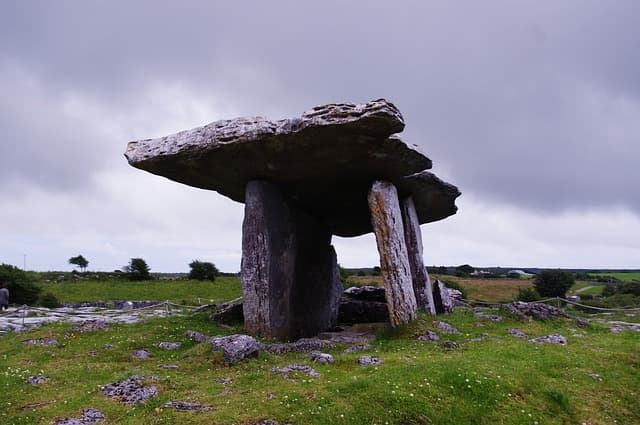
Ireland was not always an island. More than ten thousand years ago it formed a single land together with the territory of Scotland and England, which were not yet separated from mainland Europe.
The earliest humans were free to enter Ireland, but no traces of their presence have survived to this day. The Ice Age came and most of the area was covered by a thick ice sheet, which destroyed any possible evidence of early human settlement in Ireland. Therefore, so far, scientists cannot give an exact date of the first appearance of people on this island.
About 10,000 years ago, the ice began to melt, resulting in a rise in sea level. A strait was formed between Ireland and Scotland, creating an island. A few thousand years later, Britain also became an island.
Ireland was not a favorable place to live for a long time because of the climate. Where the island was not covered by glaciers, it was a tundra. It was not until about 8,000-9,000 years ago that colonization of the island began, presumably by settlers from Britain who sailed across the Gulf of St. George in boats. They were hunters and gatherers who roamed the coast.
About 6,000 years ago, the inhabitants of Ireland began to learn a new Neolithic culture: growing cereals, herding domestic animals, and living in permanent dwellings. Sheep, goats, cows, wheat and barley were brought to the island from Europe. During this period megalithic monuments, the famous Irish landmarks, began to appear on Irish territory. These were tombs built from huge boulders. Today more than two thousand such ancient monuments are known.
The ancient population of Ireland was displaced by Indo-European settlers who brought their language to the island. By 2000 B.C. the island’s Celtic people had finally formed and were already distinct from the kindred nationalities that lived in Britain. The modern Irish are the descendants of this people.
In the 7th century B.C. the Iron Age began in Ireland. The Romans had already occupied neighboring Britain. This is when the first written evidence of the island appeared. The Romans called it Ivernia, and the Roman historian Ptolemy listed the names of the local tribes in his writings.
The Iron Age lasted until the Christianization of Ireland. Little is known about it because the Irish did not yet know writing. The history of Ireland before Christianization can only be studied through archaeological excavations and Irish myths. Irish mythology tells of the tribes of the goddess Danu, of the Fir Bolg race, and of the sons of Mil, who ruled the island at different times.